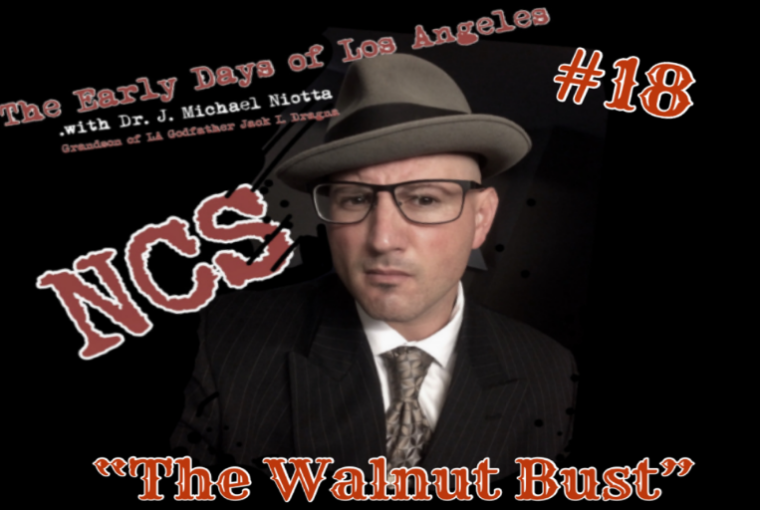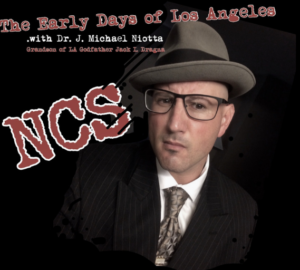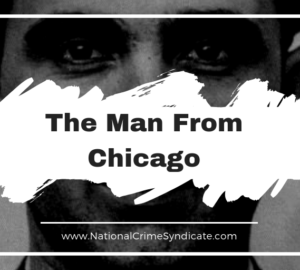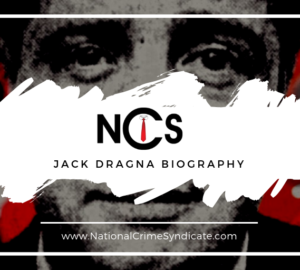15 minutes
Installment 18: The Walnut Bust
Author’s Note: Welcome to installment 18 of “The Early Days,” which looks at a transitional phase in the City of Angels—Prohibition is still new and in a surprising move, the Italians have gone from blood feuds to collaboration. It’s been quite a while since my last article and a lot has happened, including an apocalypse apparently. I returned from a 6 month active duty deployment in Africa on New Year’s Day, and released a new book shortly before that. The Fight Abroad & the Fear Back Home: Italians of the California Coast During WWII, came out in December and has already received favorable reviews. “Niotta’s thorough research and in-depth interviews merge to create a read that is both intriguing and revealing,” Italian America: the Nation’s Most Widely Read Magazine for People of Italian Heritage.” More recently, and as a fun detour from two of my long ongoing research projects—the Jack Dragna biography (Beneath the Hollywood Mafia Mask) and an early history of org crime in California co-authored with Richard Warner—I have leaped into a true crime noir that centers around the late 1914 killing that tied the underworld of East Harlem to the ethnic ghettos of Los Angeles. Look for further details at www.jmichaelniotta.com
“The history of this booze raid is well known. It was reputed to be one of the largest ever pulled off in the history of Los Angeles county.”
Evening. Friday, October 5, 1923. Pomona Court House.
Preliminary Hearing of nine in violation of the Wright Liquor Act.
Honorable Judge U. E. White
Captain George Contreras licked his thick lips then pursed them tight as if to kiss the courtroom. His face reddened and then the laughter forced through. It’d been a big haul and quite a dramatic bust at that. Plenty of close calls and laughs to be had. Newsmen were already calling it one of the largest in the county and Contreras supposed they had him to thank for that. Sitting smugly on the stand, the head of L.A. County’s dry squad conveyed his end of the recent happenings, wishing desperately that the courtroom spectators could have witnessed the hilarious theatrics firsthand.
Contreras made his return to the ranch the day after the raid. They had a damned lot of product to get rid of, and he wanted to be sure they’d been thorough in the hunt. Confident that with more time, he and his men could sniff out something missed during the chaos, he aimed to give the property a more in depth search. And he was right. The effort delivered an additional five 30-30 rifles, “loaded to the brim with dum-dum bullets,” and it also overturned something Contreras hadn’t expected—“a large number of advertising cards!” Apparently, “the gang was advertising its business and disposing of the products of their stills in business-like manner.”
And it was on that trip back that he also encountered what had him so jovial on the stand. For some reason, he simply couldn’t put the scene to rest as the deputy district attorney posed his questions. The laugh emitted was something Contreras felt unavoidable, but the D.A. clearly saw it another way. Displeased, he even called him out over the disruption. When pressed about what he found so funny, Contreras shaved the shyness and told it plainly. No sense in lying, he confessed, then promised not to exaggerate if he could help it. Besides, he figured, the tense room could use a smile. One newsman later referred to the lawman’s story as “vivid and colorful,” dubbing it an “animal jag.”
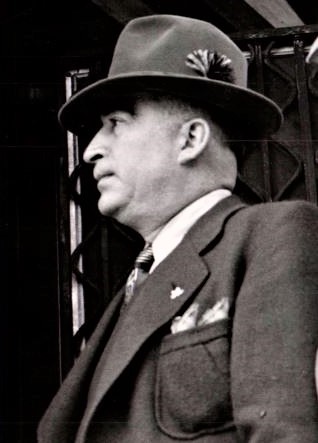
Just prior to the preliminary hearing, Captain Contreras dispatched a small detail of men and a pair of trucks out to the ranch; the objective at hand, to haul “the huge illicit distillery and all its accoutrements” into the “city for disposition.” It had become standard procedure, and one quite popular in fact. That week alone, the event up near Walnut served as the third of its kind. Combining the trio of busts, the “illicit goods seized” ran “high into the thousands of gallons.” On the final raid; however, the differences proved noteworthy. In addition to a far sight more product to load and truck, “in this raid it was white corn whiskey” rather than wine. They dubbed it “170 proof and of excellent quality.” Testing the product personally, he quickly gaged it no common swill. Impressed as he may have been, the daunting task that waited stripped bare any semblance of excitement. As he’d come to understand, loading up that much juice and equipment was no easy chore. At least he had Dick and Munson on the venture. Deputies Dick Le Roux and Ralph Munson had proven themselves plenty capable when it came to heavy lifting.
In addition to removal, they also had to gather “enough booze to be brought to Pomona for evidence at the time of the trial.” After arriving on site; however, they noted a good amount of the mash had spilt out over the ground. “The animals on the farm had free access to” the spoils, remarked Contreras, doing little to hide the smirk proudly hovering above his dimpled chin. Curiosities had been piqued and to see that always got him reeling. The potion proved to be “excellent feed,” he explained further, and without their masters present, the ranch animals “went to it with a hearty relish.” Roosters “affected with blind staggers” all “ran in circles.” An old hen, at last brave enough to retaliate, targeted her brute of a mate. Laughing, Contreras conveyed her darting, lunging again and again until she’d “lammed him to a frazzle.” And “the booze put fight into the donkeys and goats” as well. Staggering, the goats came in fast, charging sideways. Too wobbly to balance though, they kept on missing their mark. One even “mistook a fence post for an antagonist, and nearly broke its neck ramming.”
One after another, each animal at the “feast began to topple.” All but the dogs that is, Contreras reported. “There were a number of rabbit hounds on the place,” but they don’t “partake of the corn.” Contreras paused, grinning too wide to continue. By the giggles stifled throughout the courtroom, he knew he’d nailed his objective. And by the look of the attorney standing impatiently before him, he could tell it was about time to end his funny little tale. Leaning back, he rolled his shoulders and cleared his throat. “To make a long story short, that donkey all but killed the dog” and “one by one the animals actually wore themselves out.” Just as he himself was so inclined after a bender, they then “proceeded to lie down and sleep it off.”
Humorous as the sight had been, and for as many grins as the story fostered, Contreras couldn’t shake one very serious factor. Judge White fixed the defendants’ bonds at five grand a piece then handed the lot over to constable Chambers in the sheriff’s office. In the stew at the Pomona city jail sat one woman and eight men: 32 year old San Jose resident, Carmelo Sciortino; Walnut locals, 35-year-old Gaspar Scibila, 28-year-old Patsy Vasta, and 53-year-old John Costa; the Gallinas from San Diego, father, Joe—45—and son, Frank—25; and from Los Angeles, 37-year-old Mario Augustino, plus Tom and Julia Dragna of 1001 East 29th Street. And another wanted man among their party—a Giuseppe Bonventre—too injured to be brought into custody, remained confined to the ranch. Contreras again wondered over the cause of the Italian fellow’s injury. What was the verdict? They appeared to be “pretty serious looking flesh wounds.” Without a doc on scene though, they couldn’t be certain if the man’s story checked out. Bonventre claimed “that a horse fell on his leg,” but Contreras and some of the others sat “half inclined to believe” he’d “been in a gun duel” instead.
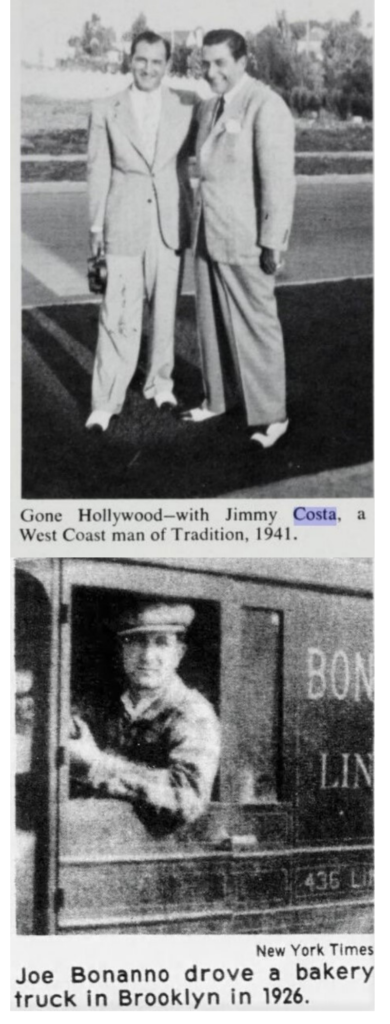
A year after the Walnut bust, Giuseppe Bonventre’s brother, Pietro, allowed Joe Bonanno—newly arrived in America—to stay with him in his home. Giuseppe’s other brother, Vito Bonventre, gave Joe a job in his bakery as a truck driver. Like Bonanno, the Bonventre family came from Castellammare del Golfo, Sicily. Detroit leader from Castellammare del Golfo, Gaspar Milazzo, a one-time Los Angeles resident and friend of the Dragna brothers, was also busted during the raid on the old Henry ranch, but gave his wife’s maiden name of Scibila as an alias. When Bonanno visited Los Angeles in 1941, he palled around Hollywood with another man arrested in the Walnut bust—Dragna family member, Jimmy Costa, also from the Castellammarese clan. Patsy Vasta, longtime Dragna faction member and close friend of Jack and Tom, stood trial as well, along with founding member of the San Jose brugad, Carmelo Sciortino, brother of San Jose family leader, Onofrio Sciortino
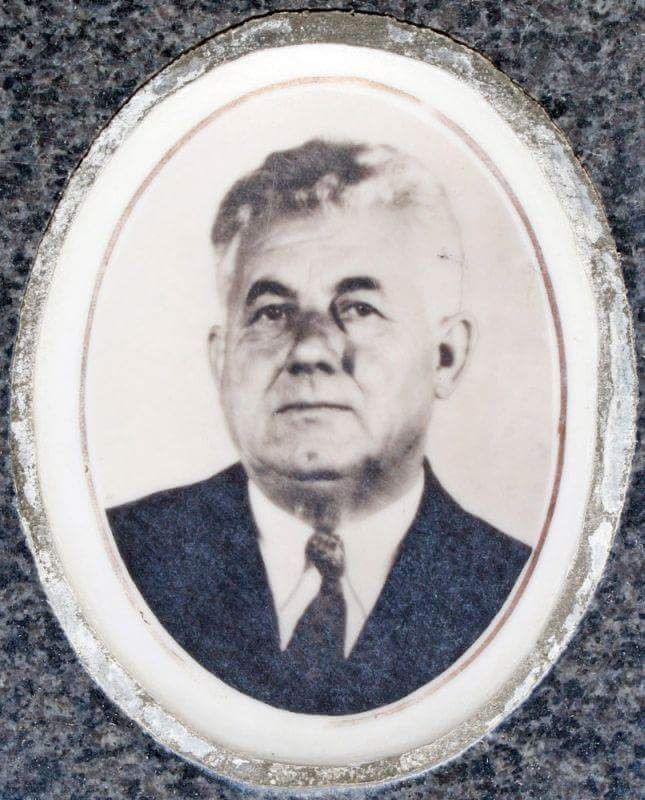
Same as ever, the lot would either make bail or occupy a cell until the judge came calling. But to Contreras’ surprise, it never got that far this time around. He himself informed the bootlegger crew their attorney was already making arrangements. And then through an interpreter, this Felix Adamoli of Los Angeles, the bonds were fixed and Chambers turned them loose. What had Contreras worried was the two men who showed up at the station. From what he’d been told, the pair came in on the day of the raid “with $50,000 in cash, ready to sign the bail of all the defendants.” Only eight of the accused behind bars, they put up $40,000. Newsmen noted “the bond in each case was signed by two wealthy Los Angeles Italians, who, it is alleged, have been going on bonds for Italians in such trouble all over this section of country.”
Weighing the apparent capabilities of the bootleg outfit, Contreras abandoned humor and—while still holding the courtroom’s attention—voiced his opinion. Reiterating what some had already stated, he expressed that the organization they shook up was no lightweight. They had big “money for the payment of fines” and for “employing attorneys” at the ready. He didn’t feel, and he made it known, that these proceedings would put an end to the bootleggers’ efforts. “The payment of a few thousand in fines”—even if meted out frequently—“really amounts to but a small license fee.” And the simple fact they all looked out for each other also had Contreras concerned plenty. They didn’t leave anybody rotting in a cell…and that kind of loyalty dissuaded dissension. Any organization as faithful as that, he considered an outfit difficult to keep down.
Even though Contreras and the boys disrupted the bootleg ring with ease, he now felt certain they’d merely been lucky. The group hadn’t been at it long—at least not on the old Henry ranch—and yet it seemed clear the group knew what they were doing. Investigation overturned that “operations had been in progress at the ranch about three months, dating from the time” of the sale made between the Sloan Seed Company and the Dragna brothers. In just three short months of production, their stills “had turned out thousands of gallons of contraband.” Not much finished product was laying around either, at least not comparatively, and that meant distribution.
“It was evident that the vendors were doing a land office business, selling their goods in Los Angeles, Pomona and elsewhere.” And they had buyers too—a network in motion. The “vendors had perfect system about their work” but screwed themselves on one simple aspect—security. Clearly, “they thought themselves secure.” Little more than coincidence had brought them onto the bootleggers’ trail—they’d made frequent purchases of large sums of fuel from local stations, drawing suspicions. As smug a performance as he’d given the courtroom, Contreras had already resigned himself to the fact they wouldn’t stumble onto that much luck again—not in finding their area of operations and not in bringing them in. He’d even half admitted it to the press, saying the “gang” they encountered was “prepared to fight had in not been taken unawares.”
* * *
Quiet and stealthy, ten agents slipped through the tall grass of the ranchland on foot, their weapons drawn. Ahead in the distance, stood a tall two-story 15-room manor pushed “back in a nook of the hills.” From afar it gave “the appearance of a royal castle of early days in the hills of Scotland.” Edging nearer, the men filing through the yard noted two smaller farm houses as well. And past these rested a pair of barns—“one 100 by 60 feet and another 30 by 50 feet”—plus a sprinkling of even smaller structures. With just ten men, that many buildings to comb presented a hell of a lot of potential danger. Despite uneasiness, they went about it as best they could.
Lawmen divided into groups then spread out, hitting separate farm houses simultaneously. Aware of the risks, they coordinated well. “Three of the men in one house were asleep, and one, who was awake, started to run.” Deputy Sheriff Chambers immediately gave chase, charging “down a nearby ravine,” where the constable halted him by firing a shot. If anyone was still resting, they were certainly up now. And then, “drawing a bead” with a sawed-off shotgun, Chambers led his captive back to the house. In his absence, Officer Devalon “succeeded in disarming and arresting the two others.” The Los Angeles officers in their party had been plenty busy as well, and fortunately they too “found some of the defendants asleep.” Naturally, not everyone halted as instructed. The lights come on and the roaches scatter. “Men leaped from the second-story window of the large ranch house, and from the upper floors of two adjacent barns. Others ran from the back door,” gunning “into the arms of waiting deputies.”
Once matters quieted some, Chambers and Contreras breathed a little easy, thankful they hadn’t walked into a fusillade of bullets. Newsmen would convey the close call later that day. “The officers appearing on the scene wholly unannounced and so sudden,” when “most of the defendants were asleep,” rendered “valueless” the “five revolvers and two sawed-off shotguns found in” the bootleggers’ possession. The element of surprise allowed the constable, two Pomona policemen, and a handful of officers from the Los Angeles PD to snatch weapons as soon as they entered each building.
Daylight now upon them and the fiasco at an end, lawmen took in the surroundings—“the hills dotted with cattle, chickens about the yard, and horses in the fields and stables.” Walking the grounds, hunting for stashes of booze and weapons, they noted just how self-sufficient the ranch operation stood. They discovered “a blacksmith shop, a tin shop, and other side buildings,” plus a stash of get away cars—a Lincoln, a Dodge, a Cadillac, and Hupmobile. They considered the ranch “a veritable farm village with every accommodation that could well be expected at such a location.”
“The still was found in the loft of the larger barn, and was red hot in operation when the officers seized it.” And the spoils she gave were impressive. “Net results” included “the seizure of ten 500-gallon vats of white corn whisky mash, seven five-gallon cans of whisky, 170 proof, and ready for transportation” plus “three tons of sugar, two tons of bran and cracked corn,” and “a 100-gallon whisky still, coils, copper containers and other equipment.” One of the men taken in, Pasquale Vasta—they all called him Patsy—he took the blame, admitting freely he rented the barn where they found the contraption.
While certainly well set for production, and heavily armed to protect their investment, the surroundings clearly also showed signs of a domestic nature. “There were at least two families,” residing on the premises and “six children were on the ranch” at the time of the bust. Tom Dragna’s family had taken up residence in one of the smaller homes but they weren’t certain if his younger brother, Jack, stayed there as well. Jack and his wife, Frances, had just celebrated their first wedding anniversary and were not yet expecting. Their first child, Frank Paul Dragna, would arrive in just shy of another year.
* * *
One of the officers yesterday declared that it was “mere boys’ play to fine these people. They pay willingly and the fines amount to but a very small license. Fining them does not deter them in prosecution of their unlawful business. The only means of ever conquering this booze ring is to give members who are caught long jail sentences in addition to heavy fines.”
Captain Contreras. Captain Contreras. The words pushed through the clouds of his thoughts. The Los Angeles dry squad leader shook his head and re-centered, lifting his eyes to meet the stare of the attorney dully mouthing his name. The sight brought his mind back to where his body sat, in the wooden seat of the witness stand at the Pomona courthouse. Clearing his throat, Contreras finally breached the subject so heavily weighing within. Although they arrested Tom during the bust, the younger of the two Dragnas—Jack—was nowhere to be found. Testimony had already proven him one of the owners and that made him liable. So why wasn’t Jack among those arrested? Contreras wasn’t the only one to place Jack somewhere at the top of the bootleg pyramid. Constable Chambers, and a few other prominent badges figured him a head man as well. The Pomona Bulletin even printed the theory. Licking his lips, Contreras recalled the artful words the journalist penned.
While investigation was still in progress late last night to determine who the “king bee” of the defendants is, Constable Chambers and Captain Contreras believed it was none other than Jack I. Dragna, of Los Angeles. Another investigation was also in progress, to determine whether there was still someone higher in the deal than even Dragna, who was furnishing the money, as it were.
Though perhaps one of the most pertinent witnesses to give a deposition, Captain George Contreras was not the only lawman called by Deputy District Attorneys E. J. Dennison and D. H. Clark; the first being Deputy Barney Kane. “There were no farm implements on the place,” Kane pointed out, countering any claim the men gathered for mere harvesting. “The large house did not contain furniture” either, he added, “only cots where the men slept.” Evidently they came to the ranch for a very specific purpose, as labor in illicit liquor production. The Gallinas of San Diego, father and son, came aboard for another reason, the art of still production—“they were manufacturing two additional 500-gallon stills when the raid took place.” By their count, the upgrade stood to triple production. When pressed about the capabilities on site, Deputy Kane offered a modest assessment—giving numbers half that of Dick and Munson’s estimations.
If the operations had been going on three months, and 50 gallons of liquor had been turned out every 24 hours (which is a low estimate), it can be seen that no less than 4,550 gallons of whiskey had been made and sold from that plant. The officers believe that more than double this amount had been distilled there, however, and that the product has gone principally to Los Angeles. They also believe that in Los Angeles county the ring to which these people belong turns out as much as 10,000 gallons of intoxicating liquor per day, and that their business is so well organized and handled that all this contraband finds ready sale at about $16 per gallon wholesale, going to the consumer at about $4 per pint.
“Two smaller houses” sit on the property as well, Kane continued, saying Tom’s wife, “Julia Dragna was in one of these.” Speaking the woman’s name immediately opened a can of worms newsmen had already enjoyed printing.
Los Angeles Times, September 28, 1923
Deputies Seize Huge Still
Melodramatic Scene in Raid as Woman Gives Battle to Officers; Eight Are Arrested
Mrs. Julia Dragna, wife of Tom Dragna, who operates the ranch, fiercely resisted the entrance of the officers. She was armed with a large club and landed blows on several of the deputies before she was overpowered. Finally, seven men and Mrs. Dragna were arrested, put into automobiles with Mrs. Dragna’s two young children, and brought to the Pomona jail.
The retelling garnered nearly as many laughs as the animal jag. But before long a more serious tone fell over the courtroom. In line with the sentiments of Captain George Contreras, Deputy D.A. Dennison gave voice to the issue of Jack Dragna.
“This booze game is a gigantic thing,” declared the attorney, “and here is one of the men who purchased that ranch for the purpose of using it for the manufacture of liquor. It is idle to tell me he knew nothing of the operations there or had no connection with the men who were manufacturing that liquor.”
Although they certainly tried, it proved hard doing to argue against the D.A.’s point, and as a result, Judge White put Jack under bond with the rest. And on that very next day at the courthouse, Contreras tasted more of the same, when the wanted man he was after made his return. Jack waltzed straight in with the funds for his bond already in hand. The papers announced, “Dragna is one of the owners of the ranch, and first appeared in the case voluntarily when the preliminary was commenced October 6.” Jack’s presence that day made it an even ten defendants in attendance.
* * *

No doubt curious over the identities of the two wealthy Italians who came to the aid of the bootlegger party, Captain Contreras made inquiries and soon learned the names of the pair that posted bond—Joseph Ernest Ardizzone and Tony Buccola, “reputed to be worth two hundred thousand dollars or more.” The fact that these two men peaceably came together to a place of law said plenty. Just a few short years earlier, Ardizzone and Buccola—leaders among rival Sicilian clans—were hard at work trying to kill each other. The bust on the Dragna ranch near Walnut which brought the pair jointly to the station proved that the blood vendetta had been curbed. For now they stood under a single banner, a flag held tight in the hands of Rosario DeSimone. But DeSimone had only just risen, following the brutal slaying of the new brugad’s first recognized leader, Vito DiGiorgio, who gunmen shot down in Chicago less than a year and a half earlier. The much feared, Di Giorgio—it is believed—was the one to instigate change, quelling the old feuds that had long divided the assorted mafia clans of Los Angeles.

- The Walnut Bust: The Early Days of Los Angeles With Dr J. Michael Niotta - May 21, 2020
- The Cornero Gang & the Infamous Page Brothers: The Early Days of Los Angeles With Dr J. Michael Niotta - June 4, 2019
- The Man From Chicago: The Early Days of Los Angeles With Dr J. Michael Niotta - December 12, 2018






